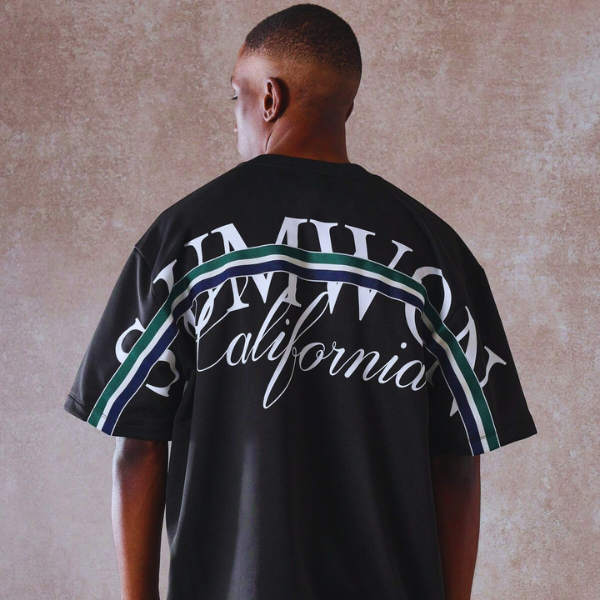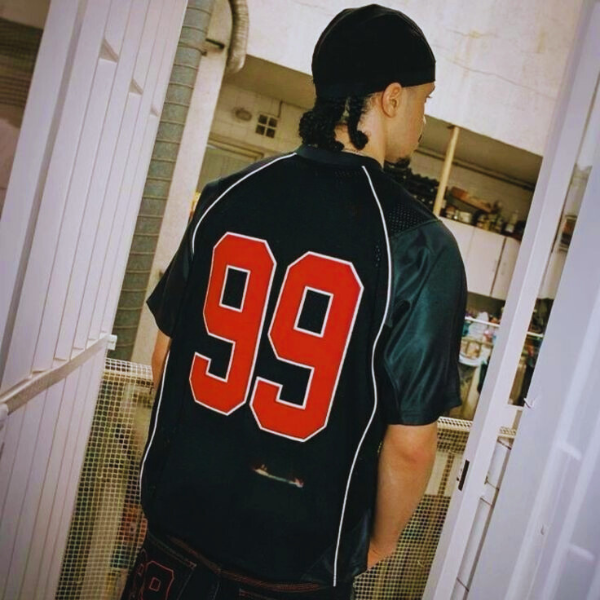Fashion, as both an art form and a cultural mirror, relies not only on silhouettes and styling but fundamentally on the fabrics that shape and animate garments. Among the many materials that have shaped the trajectory of modern apparel, jersey stands out as one of the most quietly influential yet profoundly important textiles in the global fashion ecosystem. What was once considered a humble knit fabric, associated more with functionality than elegance, has over time evolved into a cornerstone of both luxury and mass-market design. The journey of jersey from utilitarian necessity to emblem of innovation, comfort, and identity reflects larger movements in fashion history, technological advancement, cultural narratives, and sustainability discourse.
The historical roots of jersey fabric lie on the island of Jersey in the English Channel, where it was originally produced using wool and primarily used for fisherman’s garments and men’s underclothes. Characterized by its stretch, breathability, and close-knit structure, jersey was prized for its durability and adaptability to the movements of the body. For centuries, it was regarded as a purely practical material with little place in the decorative or ceremonial aspects of dress. That perception would change forever in the early twentieth century, when the boundaries between utilitarian design and fashion-forward thinking were challenged by visionary creators.
Coco Chanel is widely credited with the radical recontextualization of jersey fabric in the fashion landscape. In an era dominated by stiff corsetry and rigid tailoring, Chanel saw potential in jersey’s flexibility and understated elegance. She used the material to craft garments that liberated women from the sartorial constraints of the Belle Époque. Her jersey pieces—including blouses, cardigans, and dresses—were not merely garments, but philosophical statements about modern womanhood. They embodied ease, movement, and minimalism, ushering in a new aesthetic that prized elegance in simplicity and practicality. Chanel’s innovation turned jersey into a fashion fabric, sparking a transformation that would ripple through decades of design evolution.
As fashion moved into the modernist and postmodernist periods, jersey’s role continued to expand, particularly due to its intrinsic compatibility with the changing rhythms of urban life. The twentieth century witnessed an acceleration in lifestyles marked by mobility, leisure, and hybrid social roles. Jersey emerged as a fabric uniquely suited to this context. It offered wearability without restriction, beauty without excessive embellishment, and performance without compromising aesthetics. These qualities allowed jersey to traverse the boundaries between casual and formal, day and night, home and public space. It became the fabric of the everyperson, yet also the medium of artistic experimentation by designers seeking to challenge fashion norms.
In the late twentieth century, jersey became integral to the burgeoning sportswear and streetwear movements, both of which would shape the contemporary fashion paradigm. Particularly in the United States, the sports jersey emerged as a cultural artifact—part uniform, part iconography. Worn by professional athletes and fans alike, these garments extended far beyond the playing field. They became symbols of tribal affiliation, urban pride, and generational identity. Basketball and football jerseys, often adorned with player names, team logos, and numbers, infiltrated the streets as fashion statements that blurred the lines between fandom, lifestyle, and personal branding.
The influence of hip-hop culture in the 1990s and early 2000s brought this aesthetic into even sharper focus. Artists such as Nas, Lil’ Kim, Snoop Dogg, and Missy Elliott adopted oversized sports jerseys as part of their signature looks, amplifying the garment’s role as both cultural commentary and trendsetting attire. The jersey became emblematic of confidence, visibility, and authenticity within a fashion landscape increasingly informed by music, movement, and rebellion. The elevation of jersey from performance apparel to aspirational streetwear sparked a creative exchange between high fashion and subculture that persists today.
Luxury designers soon began incorporating jersey into their collections in ways that honored its heritage while reinterpreting it through new lenses. Brands like Balenciaga, Raf Simons, Vetements, and Maison Margiela utilized jersey in deconstructed silhouettes, asymmetrical cuts, and exaggerated proportions, pushing the boundaries of what the fabric could signify. Jersey became a tool of irony, critique, and innovation, capable of embodying both the mainstream and the avant-garde. It was no longer merely a textile but a conceptual device, reflecting on mass production, identity politics, and cultural hybridity.
At the same time, jersey retained its place in the realm of elegance and minimalism. Designers such as Donna Karan and Rick Owens utilized fine-gauge jersey to create draped gowns and fluid tops that emphasized the natural contours and movements of the body. The fabric’s ability to mold without constriction, to hug without compressing, made it ideal for garments that sought to celebrate the body in all its diversity. The rise of the body-positivity movement further highlighted jersey’s potential as an inclusive fabric—one that adapts rather than demands, that embraces rather than dictates.
Jersey’s relevance in contemporary fashion also stems from its alignment with lifestyle trends that prioritize comfort, adaptability, and hybrid functionality. The rise of athleisure—a style that fuses athletic wear with everyday clothing—catapulted jersey into the spotlight as a material synonymous with wellness, mobility, and understated luxury. Consumers, increasingly attuned to the demands of multitasking lives and digital connectivity, have embraced jersey for its ability to transition seamlessly between activities. From yoga classes to business casual meetings, from grocery shopping to global travel, jersey garments support a life in motion.
Technological advances in textile engineering have further amplified jersey’s capabilities. Modern iterations of the fabric are often blended with spandex, modal, bamboo, or recycled synthetics to enhance stretch, durability, and environmental performance. Smart jersey fabrics now offer moisture-wicking, temperature regulation, and antimicrobial properties, catering to consumers who demand functionality as much as fashion. Meanwhile, innovations in digital printing, laser cutting, and knit programming have enabled designers to explore more sophisticated visual effects and garment constructions, expanding the aesthetic language of jersey beyond traditional constraints.
Sustainability has become one of the defining imperatives of twenty-first-century fashion, and jersey is at the center of this transformation. The shift from fast fashion toward responsible sourcing and production practices has led to increased interest in organic jersey fabrics, particularly those derived from organic cotton, hemp, or recycled polyester. Brands committed to sustainability are investing in closed-loop systems, biodegradable dyes, and transparent supply chains to ensure that jersey garments align with eco-conscious values. Additionally, the durability of jersey, when produced at high quality, encourages longer garment lifespans and reduces waste, reinforcing principles of slow fashion.
Culturally, jersey fashion continues to reflect a spirit of inclusivity, self-expression, and global dialogue. The democratizing nature of jersey—its accessibility, affordability, and adaptability—means that it is worn across continents, income levels, and identities. From the jersey kaftans of North Africa to the jersey streetwear of Seoul and Berlin, the fabric speaks in many dialects, serving as a vehicle for personal and communal storytelling. Its tactile softness contrasts with its cultural sharpness; it is both gentle and bold, humble and iconic.
In the digital age, jersey has also become a symbol of intimacy and authenticity. Amid the flood of fast-paced visual content and curated digital personas, jersey garments retain a sense of realism and relatability. They are often the clothes worn when no one is watching—the loungewear at home, the travel uniform, the first layer of comfort. Yet through styling, color, and cut, they are equally capable of making powerful fashion statements in the public eye. This duality makes jersey not just a fabric, but a fashion philosophy, embodying the notion that beauty can exist in ease, that power can be soft, and that identity is not static but fluid.
As we look toward the future of fashion, jersey’s role will only continue to expand and evolve. It will be informed by ongoing advances in material science, by growing demands for ethical accountability, and by shifting cultural values around gender, body, and belonging. Designers will continue to push the boundaries of what jersey can do, from technical outerwear to digital fashion, from therapeutic garments to metaverse-ready wearables. The narrative of jersey is far from over; in fact, it is still being written in every seam, stretch, and drape of this remarkable fabric.
Ultimately, jersey is more than a textile—it is a testament to fashion’s enduring ability to balance utility with imagination, tradition with transformation. It is a symbol of our changing world, our hybrid identities, our desire for clothes that do more than cover the body—that reflect the lives we lead, the values we hold, and the stories we tell. From the ateliers of Paris to the streets of Los Angeles, from the runways of Milan to the home closets of millions, jersey remains not only relevant but essential—a quiet powerhouse of contemporary fashion



